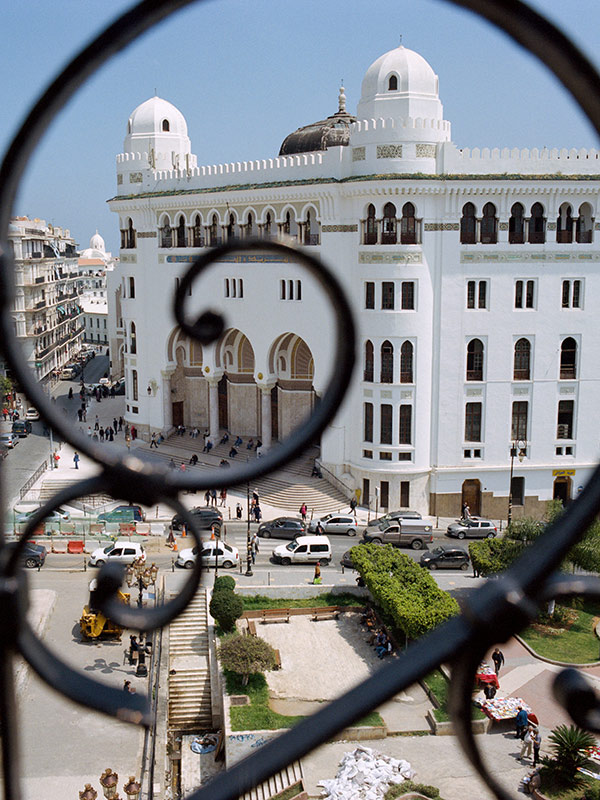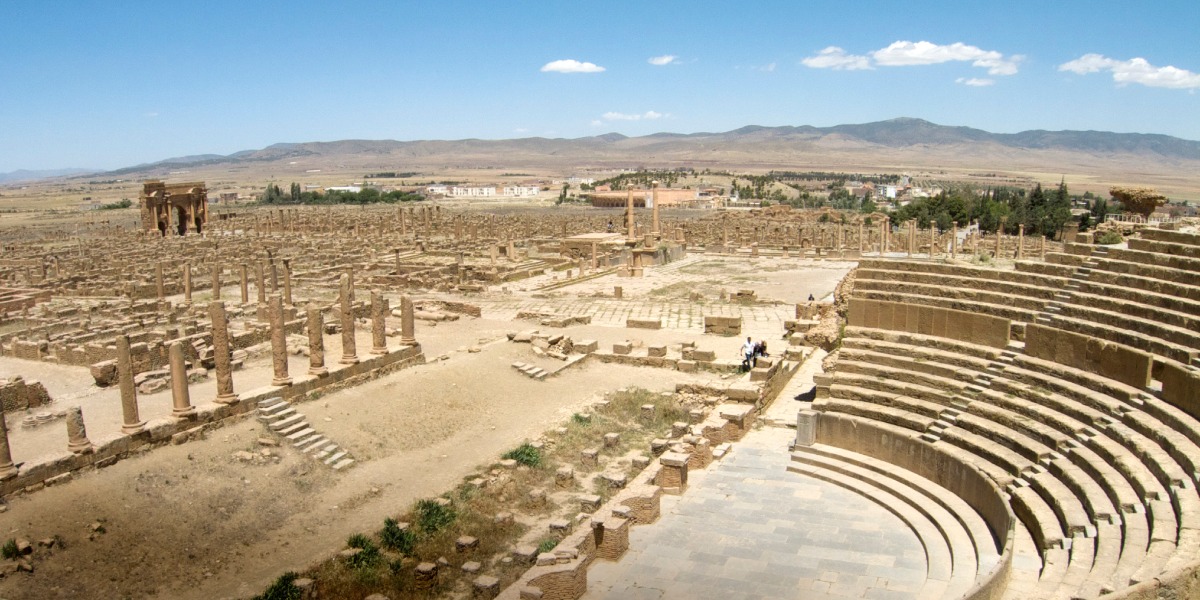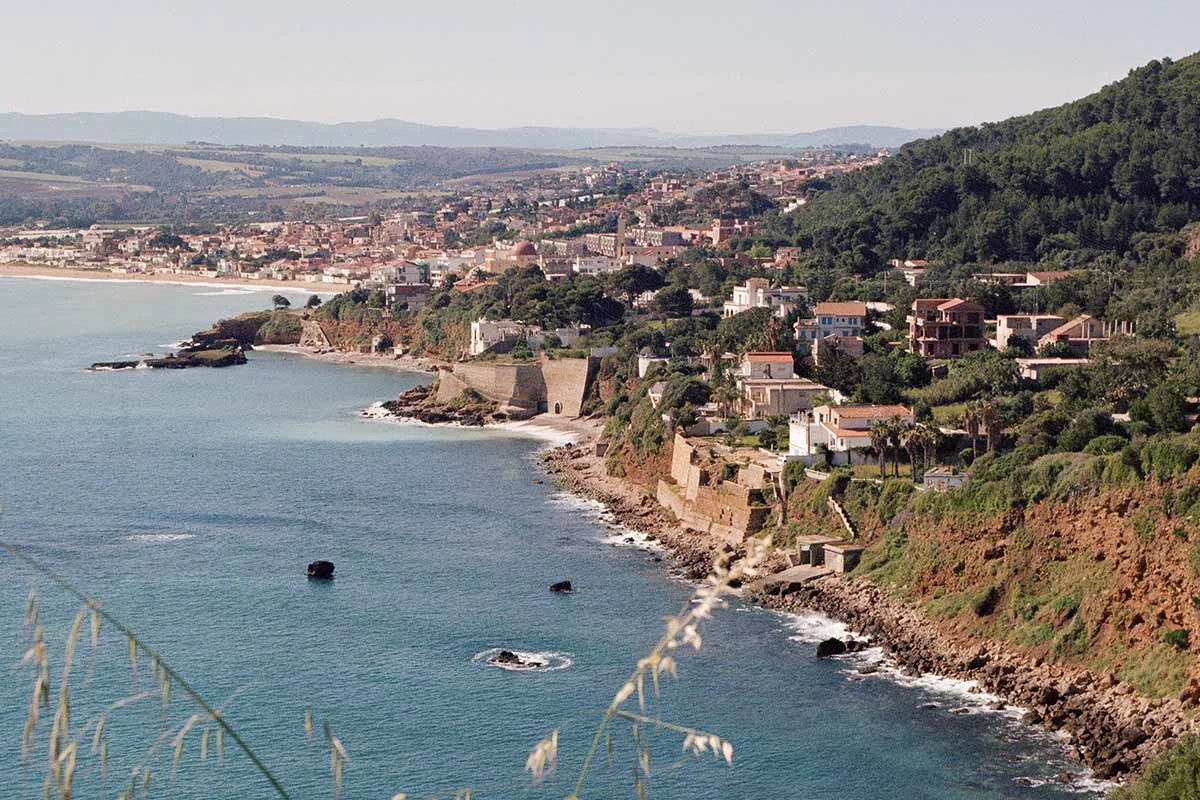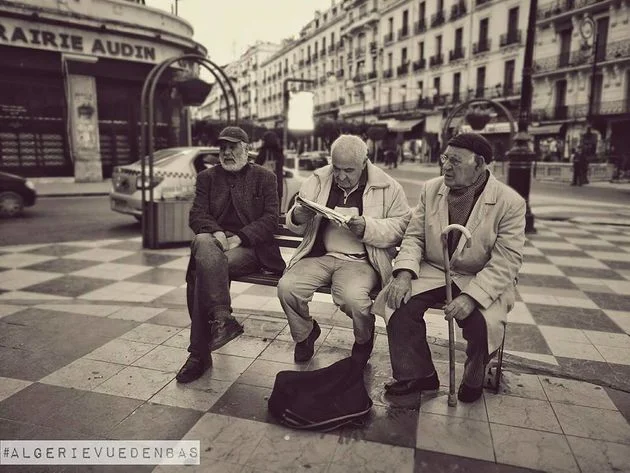ALGIERS: THE NEW WAVE
His heritage is very rich. His story, complex. His future, in great works. The capital of the largest country in Africa invests the present with the optimism of its youth. Algiers is ready. Its inhabitants, too.
Six o'clock in the morning and already this light, unvarnished. It rushes from the heights of the city to the sea. It slips through the openings of an urban tangle of unheard of density, and places its shadows on Algiers, or its whiteness. She decides the scenery. Six million inhabitants protect or defy it: old people sheltered from large trees, young people "holding" the walls. Everywhere,there is life. It is therefore an intense light, human, also the praise of a certain sweetness.
Just take one of the four cable cars to judge. Algiers is not a city of pomp or artifice. Rather a sort of territorial mosaic where the listed residential areas adjoin improbable neighborhoods. Everywhere, urbanism responds with the fever of urgency to the population growth. Youth, dynamism, desire to undertake, to create. Algiers sparkles. Algiers is reborn. Mériem, our guide, loses its breath: "From Telemly to Hydra via Algiers Center, open flea markets, chic canteens, decorative addresses, fine pastries. The trendy district of Sidi Yahya is growing with sushi bars, tacos, cereals or smoothies, tea rooms, fashion boutiques. The Perchoir, which mixes on four levels bookstore, restaurant and cafe in rooftop displays full at any time. The street only talks about the two new Uber type applications, which delegate to the past the nonchalance of the schedule. In Algiers, we drive now on time. And travelers find themselves there, in every sense of the word. We are not the only ones walking the natural balconies of the city. A dozen Europeans, bag on the back, landed the day before for a week of discovery in the capital, enjoy the sight
At this place where the blue of the Mediterranean meets that of the sky, landmarks are needed from top to bottom. The hotel Aurassi, white and slender bar. At the water's edge, the commercial port, its cranes that activate along rectilinear advances. To the northwest, well after Bab El Oued, the silhouette of the Basilica of Our Lady of Africa, flamboyant since its renovation. Meremem's voice is there, at our side, which, while stroking the sight of the fingertip: "Not far from us, Villa Abdeltif. This artists' residence was once home to Orientalist painters; today, she receives Algerian artists. The neophoretic Great Post, white, will soon become a post office and telecommunications museum. The venerable Aletti Hotel, once the center of Algerian social life, is undergoing renovation ". From above, it is impossible to count the many monuments classified as national heritage.
The islets to which the city owes its Arab name "Al Djazair" have long been integrated by a jetty to the mainland. But to contemplate all these universes that rub shoulders in the heart of a sea of anarchic concrete stitched with thousands of parables, they seem to have resurfaced, metamorphosed in the city. There is, near the port, "Algiers Center": a Rivoli on sea in its juice, with variegated windows of linen and draperies of fortune by way of curtains. In its north-west extension, there is a relief of palace-fortresses, Almoravid mosques, Byzantine minarets. Another face of the capital: its soothing plant oases capped with palm groves, such as the formidable Test Garden or the Park of Liberty (former Park of Galland). All sources of wonder for the Algerian in search of harmony. Pre-square of the privileged, chic neighborhoods seem to levitate above the real city. Hydra, and its suractive street Sidi Yahya. Above, under the blessing of the Monument des Martyrs, Bois des Arcades puts on restaurants and "loungy" bars. Sophistication culminates in the evening, when the views open to women who smoke an Alger by night of dark and glittering velvet. There are also the populous Bab El Oued and Belcourt, the nostalgic Bologhine and El-Biar, Kouba, the Golf and the Mouradia, and all the suburban way Peshawar, where no building is completed for fear of the evil eye ... And then there are these impromptu fragments of beauty, as if escaped from the clutches of time, of war, of crisis: a pan of Moorish architecture dressed with violet bougainvillea, an unexpected opening, dazzling on the bay, Haussmanian facades skated by the spray, the wind. So yes, Algiers is a dizzying, jubilant urban archipelago.
In Algiers Center, the genius of French architects wanted pedestrians to be able to go from one neighborhood to another in a staircase. Streets, avenues, neighborhoods were renamed to independence. Algiers is a city where languages tell a tormented human history, often tragic. This time, we are guided by the voice of Sherif Ammouche, his reassuring presence, scholarly. The guide explains: "Some elders still master the pataouète. This popular black-footed speech made of French, Balearic Spanish, Kabyle, Arabic dialect and Italian used to coexist with the purest French, then taught at school ". Arabized, the younger generations (60% of the population is under 20 years old) do not know much about this old urban map, its high places, as the auditorium Atlas, in the 1970s.
Streets and epochs are telescoping. The people of Algiers themselves sometimes seem overwhelmed by the weight of this story that transpires everywhere in the city. A kind of "Lost in Translation" inhabited by the temptation of oblivion. Sidewalk or pavement, what does it matter! Algiers plays it all. Under the blazing sun, between car horns. So many scenes where some cross the others, ignore or arrange ... Sometimes it works quickly, sometimes it is extremely slow. Women veiled or not, hung on their cell or shopping cart - the famous bassinet. Boys with the wick patiently worked like football star. One hundred percent Algerian titans. One hundred percent macho. Young and old exchanging some Chaabi or Andalusian chords on a mandole. "The Algerian with sensitive nerves," says the comedian Kabyle Fellag, is a sentimental that echoes his moods in the traditional music of the city.
Boredom is deceived by commenting on the radio-pavement news. Our companion, Rihana, does not seem to be moved by insistent male eyes. She mocks their flirt with the verve of her 25 years: "We listen to them in one ear, we laugh at times as they apply, surpass themselves in their poetry to achieve their ends. The street remains a world of men but the exchanges are spontaneous, relaxed. The humor - preferably acidic - distils the real, the problems and the hysteria, had confided Cherif. A kind of ingredient that spices daily life, enamels small pleasures and great complicities. It cements a plural society, too. All the crossed faces tell the Algerian geography, its human diversity: Mozabites, Kabyles, Oranais, Constantinois, people of the Great South or High Plateaux ... Coming from all the regions, these compose an extraordinary urban melting pot. Dances, costumes, regional music enliven each party. A cultural diversity connected. Within reach of memory and the future. And in the present? "After the dark decade, I never thought I could go out alone by car, at night, to see a show at the new opera," says Rihana's mother.
Lyric singing concert at the Basilica of Our Lady of Africa. Symphonic music festival. Museums renovated one after the other. The cultural dynamic is under way. Initiatives are fusing. Thus, Hania Zazoua and her accomplice Kenza Zareb live a strange hybrid entity in an apartment-event, rue Didouche Mourad. Called Brokk'art, the project mixes exhibition space, artists' nursery, art incubator, table and bed and breakfast, concept store ... At the other end of the city, Randa Tchikou bet on a gallery of contemporary art, in a society where there is still a classical vision of modern art. In the heart of the chic Dely Brahim district, its Seen Art Gallery dares to do everything. The street art exhibition was acclaimed. "People have discovered the artists Serdas or Nesach, who do Doodle Art", welcomes the thirty-year-old who dreams of a real neighborhood of galleries in Algiers. "Until then, emerging talents were reluctant to share the same places as the old guard, for fear of being associated, for fear of censorship as well." His best discovery?
Yasser Ameur, better known as the "yellow man". Because the individuals staged in his ironic paintings are as jaundiced as a sick, treacherous society, and, he says, "the humans we have become". Originally from the port city of Mostaganem, in the north-west of the country, the artist in vogue of the Algerian scene entrusts his addiction to the vitality of the street. "I draw in the cafe as in an office. I wanted to be a painter or a writer. Perhaps because here the writer is first and foremost the public writer, I have become a public painter of coffee and his "no dreams" who meditate hours in front of their cup. I am only the interpreter of "normal" people. They have so much to teach us, he says. Like the Egyptian writer Albert Cossery, I believe that the East is more philosophical than the West. There is History: in 1515, the Turkish corsair, Arudj, native of the island of Lesbos, settles in the "white city". Called by the Sheikh Salim at-Tûmi, seeking his protection against the Spaniards, Arudj built there impressive ramparts at the origin of the Casbah. In Arabic, the citadel. Its fortified structure is superimposed on that of Bologhine, first builder of Algiers, who himself built the city on the ruins of the ancient Roman city.
It is the younger brother of Arudj, Khayr ad-Din - he will call himself Barbarossa - who succeeds him and places Algiers under Ottoman regency. "A tyrant!" Exclaims Sherif Ammouche - whose scholarly voice we have just recovered. Along the alleyways, this one tells a saga of deys (Ottoman governors) and gabelles (taxes), "races" of piracy and slaves, revolts and violence of the janissaries, the militia of the Ottoman Empire , on the Berber natives. "They left us the haik, the elegant veil still worn by the old ladies, the Istanbul Chechia - the red headdress of Turkish dignitaries - and of course, the Kasbah, a labyrinth of cubic and low houses protected from cars. The Algerians remain very attached to him because she has long embodied the power of the Barbary Navy in the Mediterranean ".
What about the present? Throughout the elevation of almost 120 meters, the tide goes back to fixed hours: at 12 o'clock and 17 o'clock. When the end of the school is over and the workers are out, the alleys and squares are filled with boys clinging to the ground to play the balls or the spinning top and workers lined up in front of the garantee merchant. Served on a simple sheet of paper, this kind of polenta chickpeas cut into parts, sprinkled with cumin, allows to "sink a slab"; understand to cut the hunger. Behind the ramparts, we live in the old fashioned way. "The older ones still wander with a bit of mint to the ear to signify that they have a daughter to marry and end up typing dominoes every day.
The traditional rams' fights are rare but the cages housing the precious goldfinches still adorn the outer walls ", describes Karima, who grew up in Bab El Oued, next door. These little birds with their red throats and sublime songs are bought at a golden price. "He sold one to 30,000 dinars as he sang well! If they stop singing, they depress and die, "she says. "This Algerian passion fills a lack of generalized affection," smiled Cherif.
Picture taken by Algerie vue d’en bas
And then, unexpectedly, in the heart of this historical place, contemporary art catches up with us. A traditional house has just been renovated and transformed into a hybrid arty address, under the impetus of Arslan Naïli. The young designer poured into contemporary installations and upcycling wanted to "give a future" to the home of his grandparents, the Bouhired, famous characters of the war of independence. A place of exhibition, performance and artistic residency, at the same place where the FLN militants, Yacef Saâdi and Zohra Drif, were arrested ...
It's Friday ! Sunday in Algeria. We are not alone to go to Mount Chenoua along the former Roman road, in a hilly countryside, punctuated by windbreaks reeds. Developed in the 1930s around the ruins of an ancient Roman colony, Tipaza, the city dear to Albert Camus, is a favorite exit for families in Algiers. Girls long hair in the wind, boys very lively, children on their thirty-one ... all released in the largest necropolis of the Mediterranean. Or when freewheeling demography invests the ocher stones and the red sandstone cliff of the old Punic counter. Always the voice of Cherif, with us, open on the history of a North African shore, once high place of Christianity in the heart of paganism. A fascinating lecture on the jewel of Roman-African urban civilization. In the background, the intense blue sea "that we look north, question of orientation", sign the tragedy of geography: Algeria, this African, perched at the top of the continent, the sea oriente inexorably towards a Europe near and far. Alicante is only twelve hours away. And, as Chérif remarks: "If young Algerians are connected to Paris, those of Oran dream of Spain".
Lunch in the restaurant under the arbours, for the better-off. Happy and wild picnic for others. The time is for selfies today in this setting where the origins are lost. We walk in the shade of umbrella pines and cypresses, in scents of scrubland. So, without warning, go back the sweet smells of Algerian cakes, the scents of bouquets of coriander on the markets of the capital. The city is here again, in us. And the urge to find her, to enjoy the good plans spotted before our departure for Tipaza: grilled sardines and iodine view of the Repaire, fresh mint lemonade of the favorite coffee of the "yellow man" in Telemly, chaâbi concert captured on the Facebook page of the opera ... The desire of Algiers is inexhaustible.
By
NADIA HAMAM MARTY











